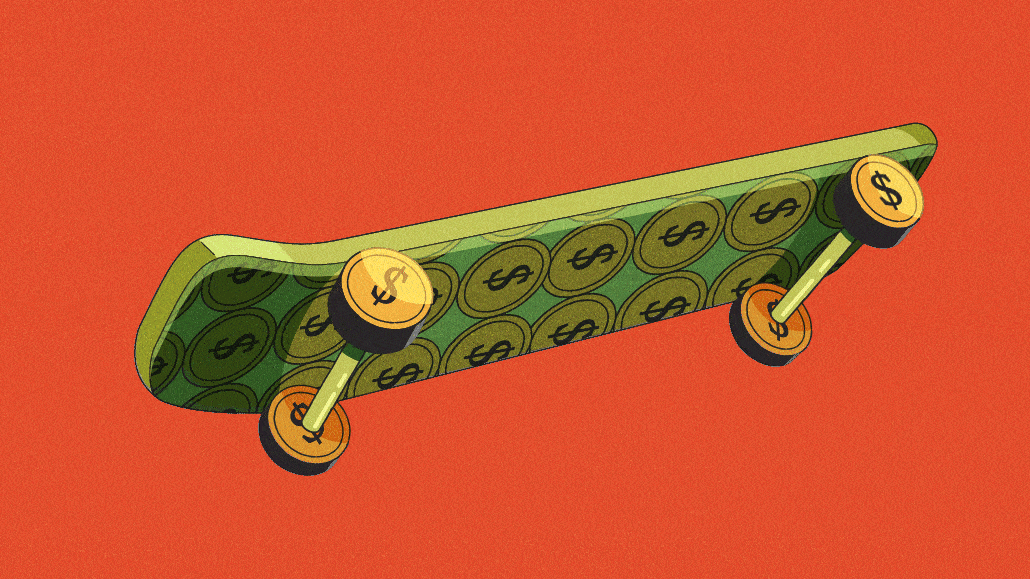By Kimeko McCoy • April 1, 2024 • 4 min read •

Ivy Liu
The moment of reckoning for performance marketers seems to have finally arrived. For years, marketers over-emphasized performance marketing, especially as the return on ad spend became even more important amid economic uncertainty. But as the digital advertising marketplace gets more crowded, expensive and riddled with data privacy initiatives, performance marketers find themselves at an inflection point.
Recently, the focus has shifted back to brand building and awareness marketing tactics, striking a better balance between performance and brand marketing to stand out from competitors. Essentially, advertisers need to boost brand awareness and strengthen relationships with shoppers, according to Nik Sharma, CEO at Sharma Brands, a branding strategy agency.
“That’s exactly why the brand stuff is getting more money,” Sharma said. “Because the challenge now is: How do you become interesting to buy? And you can’t do that by just running Facebook ads.”
Over the past year, brands heavily focused on performance marketing, including direct-to-consumer companies, have started to retool their marketing strategies to be less reliant on Google and Meta, and explore more brand building ploys such as live events, video ads and earned media.
Between creeping CPMs, fragmentation in the digital ad marketplace and Google’s crumbling third-party cookie muddying tracking and targeting capabilities, performance marketers have had a rough go. Many are now looking for ways to boost brand awareness and foster communities.
Agencies say they’re seeing more requests for proposals seeking partners who can help with brand building over the span of the last few months, if not the last year. 36% of marketers worldwide plan to increase their investment in brand marketing this year, up from 31% last year, according to eMarketer.
Earlier this month, direct-to-consumer home brand Parachute significantly increased its experiential marketing spend to support in-person activations. At the same time, DTC athleisure brand Halara rolled out its first ever brand-campaign to boost brand awareness. Back in February, Orangetheory Fitness hired a comedian for an in-person and live streamed event as part of its brand building efforts.
From its founding, Halara was positioned to grow fast and scale, said Gabby Hirata, global brand president of Halara. After entering viral status on TikTok, the brand recently embarked on its first-ever brand campaign. This year, Hirata says her focus is establishing brand authority in today’s crowded and ever-changing ad landscape, she said. (Hirata did not disclose media spend figures.)
“We really feel that we haven’t [put] enough thoughts into defining who we are,” she said. “Not so much as now we are obsessed with the brand ethos or our brand identity. It’s more about building that enduring relationship with our customers.”
Consider it a pendulum swing. Post-pandemic, sales started to soften as economic downturn and inflation forced shoppers to be more conservative in their spending. In response, marketers had to make every dollar count, focusing more on sales and conversions. Brand marketing doesn’t have the same metrics to prove return on ad spend. Hence, the pendulum swinging toward performance marketing, where marketers can find a strong return on their ad investments via search, social media, display ads and more. This was especially true for startups, who had limited budgets to begin with.
Now, however, brands are struggling to stand out and win with performance-driven marketing tactics in a marketplace that’s increasingly fragmented and saturated with advertisers. As Polly Wong, president of Belardi Wong marketing agency, put it, “If you only focus on bottom-funnel marketing for a couple of years, eventually it backfires on you.”
She added, “So what’s happened is that everybody’s kind of woken up in the last couple of months, said, ‘Wow, we’ve been so focused on optimizing our marketing dollars and we’ve spent all of our money on bottom-funnel marketing, and now our customer file is shrinking.” And the pendulum makes another move.
That’s not to say the pendulum has swung in the opposite direction and that the sun is setting on performance marketing anytime soon. That is to say advertisers are looking to strike a better balance between performance and brand marketing. Performance marketing closes deals and lands sales while brand marketing helps keep the brand top of mind for shoppers. Or, as Brandy Alexander, managing director of TandemTide, a boutique performance marketing, commerce and data analytics firm, explained, “Brand marketing is like asking consumers to fall in love with you. Performance marketing is like asking consumers for a one-night stand, it’s transactional.” Ultimately, the two must work together, she added.
As Google’s cookie continues to crumble, channels like connected TV, brand collaborations and earned media may play a bigger role in media spend for brands looking to strike that balance, Sharma says.
“It’ll really just become again what it used to be. History repeats itself. It’s just going to be a competition of attention — who can retain attention, who can grab attention,” he said. “Whoever puts out the most interesting content or comes out with the best innovative thing to capture attention will ultimately win.”
https://digiday.com/?p=539455
